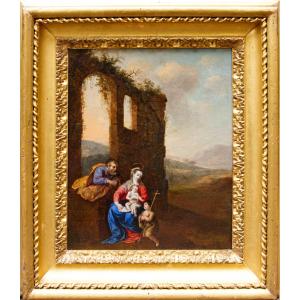The repentance of Mary Magdalene
Oil on copper, cm 13 x 17
With frame, cm 23 x 19
La Maddalena is a character that has always been very present in painting and sculpture, one of the most beloved sacred images of Italian and European art, a saint with many faces often contrasting, whose figurative fortune testifies to the great ascendancy exerted since ancient times on the collective imagination. The works that depict it are many and date back to late antiquity, being configured in an iconographic richness characterized by very different representative contexts. The figurative development of this character, in fact, did not have a regular and uniform course, but articulated along a complex and heterogeneous path. Mary Magdalene (also presented in the Gospels as Mary of Magdala) is mentioned in the Gospel of Luke as one of the women who followed Jesus: All the evangelists place her present at the crucifixion and burial of Christ and identify her with the one who went to the tomb on the morning of Easter Sunday, to anoint his body, discovering the empty tomb. And also according to the Gospels, Magdalene was the first to see Jesus risen and to announce his resurrection to the apostles: it is of great importance that in a time when the testimony of women, and therefore their word, had no legal value, Christ entrusts the fundamental message of Christianity to Mary Magdalene, making her the first witness, the mediator of the Word, of the incarnate Logos.
Among the most well-known iconographies of Mary Magdalene there is certainly that of repentance: in this case, the woman is presented in the act of depriving herself of the jewels that refer to her life as a sinner. The painting in question, an oil on copper of limited dimensions but of refined workmanship, depicts a girl, dressed in an elegant but discinto with her hair loose in the act of getting rid of her jewelry.










































 Le Magazine de PROANTIC
Le Magazine de PROANTIC TRÉSORS Magazine
TRÉSORS Magazine Rivista Artiquariato
Rivista Artiquariato